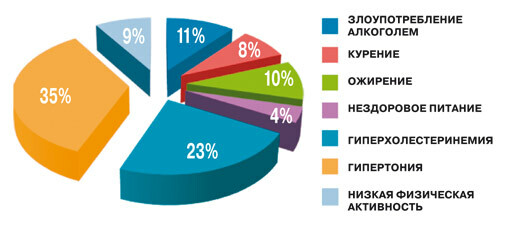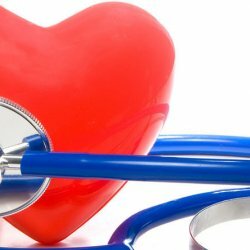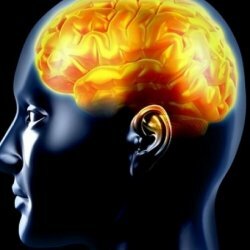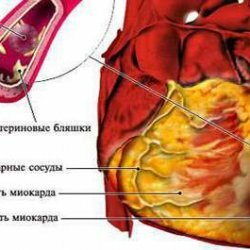Primary and secondary prevention of stroke in men
Stroke is not a primary disease and always develops against a background of various pathologies, being their natural final. This severe and dangerous illness causes thousands of men of different ages to die each year, and a large number of surviving patients become disabled.
Every year more than 20 million people suffer a stroke in the world, in the USA - 700 thousand, in Russia - more than 400 thousand, in Ukraine - 110-120 thousand. Among the patients with this pathology, the majority are men, and every year neurologists mark, That the stroke "younger" - earlier this disease was more often observed in men of more mature age( after 60 years), but now the patients of neurologists or neurosurgeons are increasingly young men 30-40 years old.
Such disappointing statistics have led to a decision on the part of WHO to begin active work on educating the world's population about the measures for the prevention of stroke. Experts believe that the increase in the number of patients is associated with a significant increase in stressful situations, the increase of various factors predisposing to the development of pathology and the deterioration of environmental indicators. However, in addition to ecology and stress, there are other objective reasons that provoke the development of this dangerous disease.
In this article we will acquaint you with the main risk factors leading to the development of stroke and the methods of preventing this serious and dangerous disease. This information will help you to be fully prepared for this pathology and to warn it.
Contents
- 1 What should everyone know about a stroke?
- 2 Risk groups for stroke development
- 3 Primary prevention of stroke - 10 main measures
- 3.1 1. Timely treatment of pathologies that increase the risk of stroke
- 3.2 2. Abandonment of bad habits
- 3.3 3. Rational and balanced nutrition
- 3.4 4.Sufficient motor activity
- 3.5 5. Body weight correction
- 3.6 6. Prevention of atherosclerosis and hypercholesterolemia
- 3.7 7. Control and correction of blood pressure indicators
- 3.8 8. Prophylaxis of thrombosis
- 3.9 9. Blood sugar control
- 3.10 10. Stress management
- 4 Secondary stroke prevention
What should everyone know about the stroke?
Most of us believe that a stroke is a disease of the elderly. However, recently this established stereotype has been completely destroyed, and stroke occupies a strong leading position among the causes of death and disability of able-bodied men.

Fig.1 - Types of strokes.
The consequences of a stroke in many cases are very deplorable and many survivors have to undergo rehabilitation for many years. Some of them manage to defeat the disease and return to normal life, but many patients remain incapable of full communication or remain paralyzed.
The most likely consequences of a stroke include the following:
- paralysis and paresis;
- speech disorders;
- sensitivity disorders;
- disorder of coordination and balance;
- visual impairment;
- change in muscle tone;
- central pain syndrome;
- trophic disorders;
- disorders of higher mental functions;
- bulbar and pseudobulbar disorders;
- Post-stroke epilepsy.
As a rule, the main causes and risk factors for stroke are:
- arteriosclerosis;
- arterial hypertension;
- type I and II diabetes mellitus;
- IHD;
- disorders of fat metabolism( hypercholesterolemia);
- bad habits;
- asymptomatic carotid artery stenosis;
- aneurysm of cerebral vessels.
The following factors can contribute to the development of a stroke:
- obesity;
- frequent stress and excessive psycho-emotional and physical stress;
- Migraine;
- poor nutrition;
- heredity;
- increased blood viscosity;
- series of cardiac pathologies( dilated cardiomyopathy, ciliary arrhythmia, congenital heart diseases, etc.);
- cervical osteochondrosis;
- sedentary lifestyle;
- some blood diseases, accompanied by increased blood coagulability.

Fig.2 - Risk factors for stroke and their approximate contribution to the development of pathology.
According to specialists in 80% of cases to eliminate the impact of threatening factors, and significantly reduce the likelihood of stroke is possible. To help achieve this goal, the measures for primary and secondary prevention of can be specially developed. And think about its implementation should many of the men, because the risk of developing an attack of stroke significantly increases after 40 years, and to begin to prevent the disease must be in advance.
Stroke is cunning not only because of its consequences - the risk of developing a recurrence is about 30%.In the first year after the attack, the likelihood of recurrence of a stroke is 20%( in 2-3% of survivors, a second attack develops within the first month after the transplant), after three years - 18%, and in the next five years - 40%.
Close attention to one's health should be given to patients who have suffered transient ischemic attacks( TIA).They have an absolute risk of stroke in 12 times higher than those of men of the same age without a TIA in the anamnesis.
Risk groups for stroke development
All those at risk must always think about the need to take measures to prevent stroke:
- persons with a tendency to form blood clots and microthrombi;
- persons with excess weight;
- persons who abuse alcohol and / or smokers;
- persons who have arterial hypertension( blood pressure above 140/90 mm Hg);
- persons suffering from IHD, dyscirculatory encephalopathy and diabetes mellitus;
- persons who already had acute circulatory disturbances in the brain.
Primary prevention of stroke - 10 main measures
Measures for primary prevention of stroke should be performed before the onset of the disease. These include:
- Timely treatment of pathologies that may increase the risk of stroke.
- Quitting smoking and limiting the consumption of alcoholic beverages.
- Rational and balanced nutrition.
- Sufficient motor activity.
- Correction of body weight( if necessary).
- Prevention of atherosclerosis and hypercholesterolemia.
- Control and correction of blood pressure indicators.
- Prevention of thrombosis.
- Control of blood sugar level.
- Coping with stress.
The above prevention measures are designed for two categories of people: those who already have risk factors for stroke, and those who do not have obvious pathologies. The primary link in prevention is a family doctor or a district therapist, and then the work should be carried out by a more narrowly focused specialist - a district doctor-neurologist. These doctors define groups of persons for dispensary registration and control and make the necessary plan of diagnostic and therapeutic measures for each patient.
1. Timely treatment of pathologies that increase the risk of stroke
Stroke is always a consequence of various pathological conditions, which, with their progression, significantly increase the risk of acute circulatory disorders in the vessels of the brain. Persons with such diseases and pathological conditions as atherosclerosis, IHD, some cardiac pathologies, diabetes mellitus, migraine, obesity, arterial hypertension, cerebral vascular aneurysms, hypercholesterolemia, increased propensity to form microthrombi and thrombi, cervical osteochondrosis and stenosis of carotid arteries,should be regularly examined and observed by a specialist, observing all his recommendations for the treatment and prevention of a particular ailment.
According to the majority of doctors, all persons who have crossed the threshold of the fortieth anniversary, for prevention purposes, should regularly undergo( at least once a year) such diagnostic examinations:
- ultrasound of vessels;
- heart ultrasound;
- ECG;
- MRI of the brain;
- biochemical blood test.
2. Abandonment of bad habits
Consider such figures:
- smoking( both active and passive) increases the risk of stroke in 1,5 times;
- excessive consumption of alcohol increases the probability of stroke in 1.7 times;
- Drug use( especially methamphetamines and cocaine) increases the risk of stroke by 2-3 times.
Everyone knows about the harmful effects on health of such harmful habits as smoking, alcoholism and drug addiction. Toxic substances found in tobacco, alcoholic beverages and narcotic drugs contribute significantly to the development of metabolic disorders and most negatively affect the state of the vascular walls. That is why to prevent the development of a vascular accident in the cerebral vessels it is necessary to get rid of these bad habits.
3. Rational and balanced nutrition
The problem of irrational nutrition is acute in many countries around the world. Abuse of fatty, fried, spicy and high-calorie food leads to the development of many pathologies: atherosclerosis, hypercholesterolemia, hypertension, IHD, obesity, increased blood viscosity, diabetes, etc. As a result, such a "diet" affects blood vessels, and the risk of onsetstroke.
To prevent stroke, doctors recommend that you follow a diet that is indicated for patients with hypertension. This diet was called DASH( a dietary approach to the treatment of hypertension) and is based on the principle of limiting the consumption of sugar, foods rich in cholesterol and saturated fats, and table salt. It is recommended to include in the daily diet more products that are rich in poly- and monounsaturated fatty acids( see "Omega-3 and omega-6 fatty acids"), pectins and plant fiber.
In the diet with DASH diet should include:
- bread from wholemeal flour;
- cereals: rice, buckwheat, oats, millet, semolina;
- meat: lean beef and veal( cooked steamed, boiled or baked), chicken without skin, fish;
- potatoes;
- dairy products: skimmed milk, dairy products, skimmed cheese or partially defatted Mozzarella cheese;
- vegetables: carrots, broccoli, turnips, spinach, zucchini, beets, pumpkin, tomatoes, etc.;
- beans: beans, green peas, beans;
- fruits: dates, grapes, bananas, apricots, apples, peaches, melons, mangoes, citrus fruits, prunes, plums, strawberries, raisins, etc.;
- nuts and seeds: peanuts, hazelnuts, walnuts, almonds, flax seeds, sunflower seeds.
Read more: TOP-10 products useful for the heart and blood vessels
The diet should consist of the usual foods and the transition to a change in the diet should be gradual. It is necessary to avoid overeating and snacking sweets or sandwiches with sausages, preferring low-fat dairy products, fruits and vegetables.
4. Sufficient motor activity
The modern rhythm of life is often accompanied by inactivity - work in the office, travel by car, a long stay in front of TV screens and computer monitors. As a result, the lack of sufficient physical activity leads to a disruption of metabolism and a deterioration in overall well-being.
Regular physical activity is one of the most important methods of preventing strokes at any age. Systematic exercises in physical culture and sports help to effectively combat arterial hypertension, reduce the level of "harmful" cholesterol and sugar in the blood, improve the functional state of blood vessels and blood circulation in brain tissues, myocardium and other organs, promote full saturation of tissues with oxygen and improve metabolism.
To achieve such results, you can engage in physical education, jogging, walking, swimming, gymnastics, tennis, aerobics or other sports. In the course of the exercises, it is necessary to take into account the doctor's recommendations about the intensity of physical exertion, which will depend on the age and general health.
5. Body weight correction
Obesity often leads to increased levels of cholesterol and blood sugar, the development of hypertension, diabetes and cardiac and vascular pathologies. As a result, the likelihood of stroke is significantly increased. That is why the prevention of this dangerous disease should always be aimed at preventing the appearance of excess weight or fighting obesity.
Calculate body mass index - online calculator.
6. Prevention of atherosclerosis and hypercholesterolemia
Stroke prevention measures should always be accompanied by constant monitoring of the level of cholesterol in the blood. Excess cholesterol leads to the formation of atherosclerotic plaques in the lumen of the vessel and significantly increases the likelihood of its rupture. The regularity of the delivery of this analysis is determined by the doctor. As a rule, people older than 20 years are recommended to conduct it once a year, and after 40 - once every six months.
When identifying hypercholesterolemia, the doctor will recommend to reduce the level of fat intake and introduce into your daily diet those foods that help to reduce the level of "harmful" cholesterol. If necessary, to reduce cholesterol, it is recommended to take a course of statin drugs( Niacin, Simvastatin, Pravastatin, etc.).
7. Control and correction of blood pressure indicators
Increased blood pressure is one of the most frequent causes of vascular rupture. This factor increases the risk of stroke by 30%.To cause hypertension may be various causes: atherosclerosis, high blood viscosity, hypercholesterolemia, renal pathology, obesity, frequent stresses, diabetes mellitus, malaise, etc.
To think about systematic monitoring of blood pressure indices, it is necessary in the presence of any signs of its increase( headache,heaviness in the head, dizziness, redness of the face, etc.) and to persons who reached 30-35 years of age. To prevent arterial hypertension, you need to eat well, give up bad habits, control body weight and regularly engage in physical education or sports.
With a frequent increase in pressure( more than 140/90 mm Hg) it is necessary to undergo a comprehensive examination to determine the causes of hypertension. In some cases, adjust the blood pressure indicators by observing diet, overweight, avoiding bad habits and eliminating stressful situations. If such conservative measures are ineffective, the doctor will recommend the use of antihypertensive drugs - diuretics, calcium channel blockers, ACE inhibitors, etc. Selection of such medications and their dosing is always done individually for each patient. The constant intake of stabilizing AD drugs can successfully prevent the onset of stroke and the development of its severe complications.
8. Prevention of thrombosis
Most of the strokes are caused by the formation of thrombi in the lumen of the cerebral vessels, leading to the development of ischemia of the areas of the brain tissues. The cause of blood clots can be changes in blood indicators, which are detected by the blood test of INR.To prevent thrombosis in such patients, antiplatelet agents( Trombo As, Aspirin Cardio, Cardiomagnet, etc.) or indirect anticoagulants( Heparin, Warfarin, etc.) are recommended, which allow normalizing blood viscosity and preventing the formation of blood clots. Selection of the drug, its dosage and duration of reception is determined by the doctor individually for each patient, taking into account the data on the state of health and the indicators of laboratory tests.
9. Blood sugar control
In the absence of risk factors for the development of diabetes mellitus, blood glucose monitoring should be performed for every man over 45 years old, and if there are any, after 30 years. In the presence of diabetes mellitus for the prevention of stroke should constantly monitor blood sugar and maintain it within the norm with diet, taking tablets of hypoglycemic drugs or insulin.
10. Stress management
Increased psychoemotional stress and stress are among the most common causes of stroke. If, due to certain circumstances, it is not possible to eliminate them, then it is necessary to think about the maximum protection of the nervous system from these negative effects. For this, you can take sedatives - plant-based sedatives, tranquilizers or antidepressants.
Secondary stroke prevention
A stroke that is transferred tenfold increases the risk of recurrent stroke and measures to prevent this serious illness are necessary to prevent such dangerous complications. It must begin in the hospital( in parallel with the treatment of a stroke).
The main methods of secondary prevention of stroke are as follows:
- Complete rejection of bad habits.
- Rehabilitation of a patient with a gradual increase in physical exertion( exercise therapy, outdoor exercise, massage).
- Compliance with a diet with a significant restriction of foods that are rich in cholesterol.
- Fighting overweight.
- Admission of antihypertensive drugs and constant monitoring of blood pressure.
- Admission of antiaggregants and / or anticoagulants to reduce the risk of blood clots.
- Surgical correction of vessels( if necessary).
- The use of folk recipes and non-traditional methods of preventing strokes( in consultation with the doctor and without the abolition of basic methods).
Stroke is one of the most dangerous diseases for a person's health and life. Remember that to prevent the threat of its development is much easier than to get rid of its consequences. Accurately follow the above recommendations for the prevention of stroke, and be healthy!
Cardiologist Petrova Yu.
Recommended for viewing:



